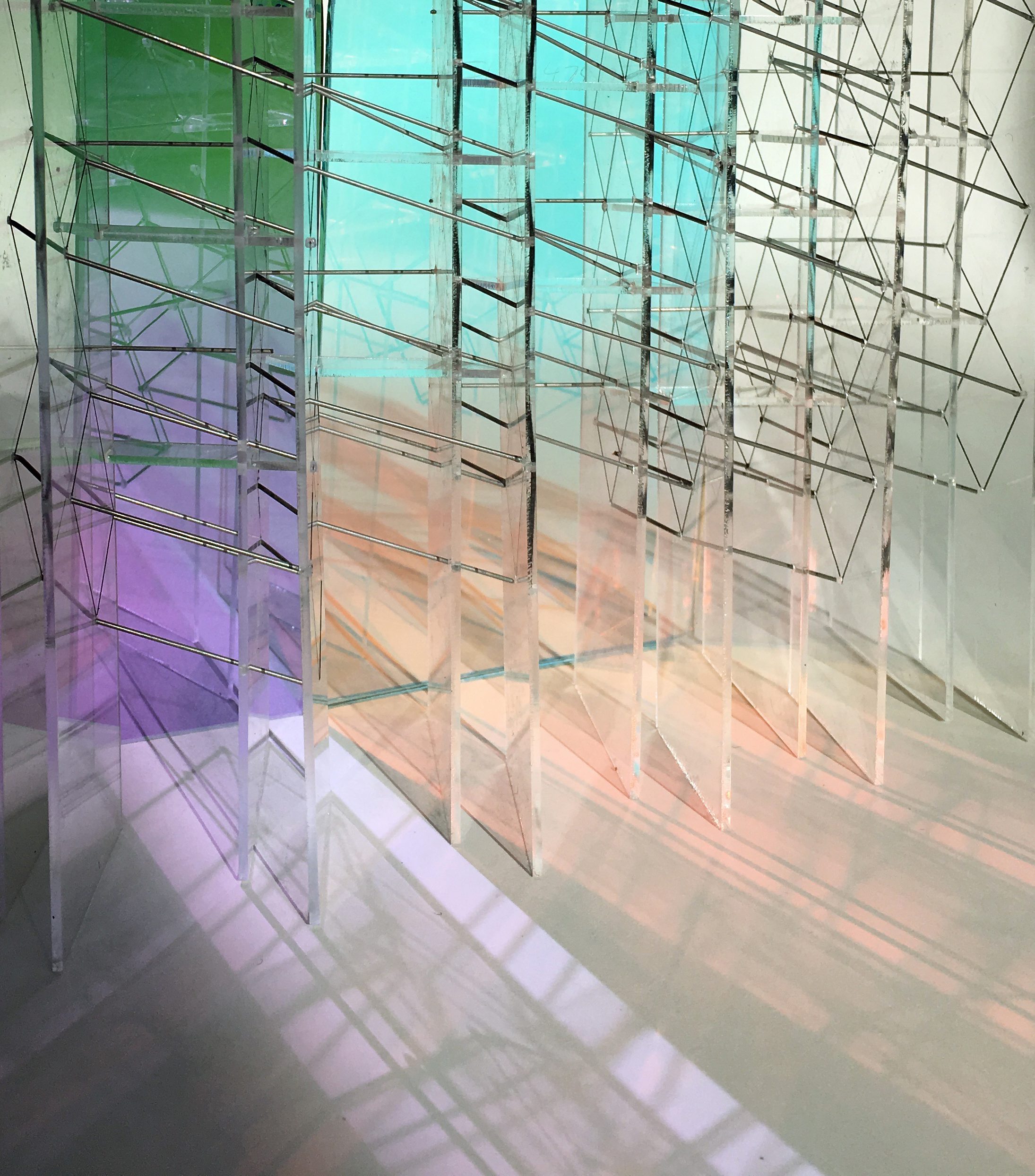A Partnership Forged in Glass
By David Wilkins
MANY FACTORS AFFECT THE well-being of the modern workforce — office design, commute time, and the omnipresence of technology, to name a few.
And glass, says Robert Adams.
“Workplace stress essentially kills us,” says Adams, associate professor of architecture and director of Taubman College’s Master of Science in Design and Health program. “It travels with us endlessly through our devices and the demands of the work itself.”
Through a new 18-month research project funded by Guardian Industries, Adams and a team of faculty will explore how glass-intensive assemblies, composites, and architectural products can promote health and workplace wellness by complementing organizational systems to de-stress the cognitive aspects of the contemporary work-sphere.
“Emerging applications of glass-based building materials have the potential to reduce environmental pressures on cognitive labor, encourage cognitive flow, and promote well-being across myriad psychological and physiological factors,” Adams and his team wrote in their project proposal. “We believe the visual, biometric, and environmental properties of glass applications can promote healthy and productive work environments.”
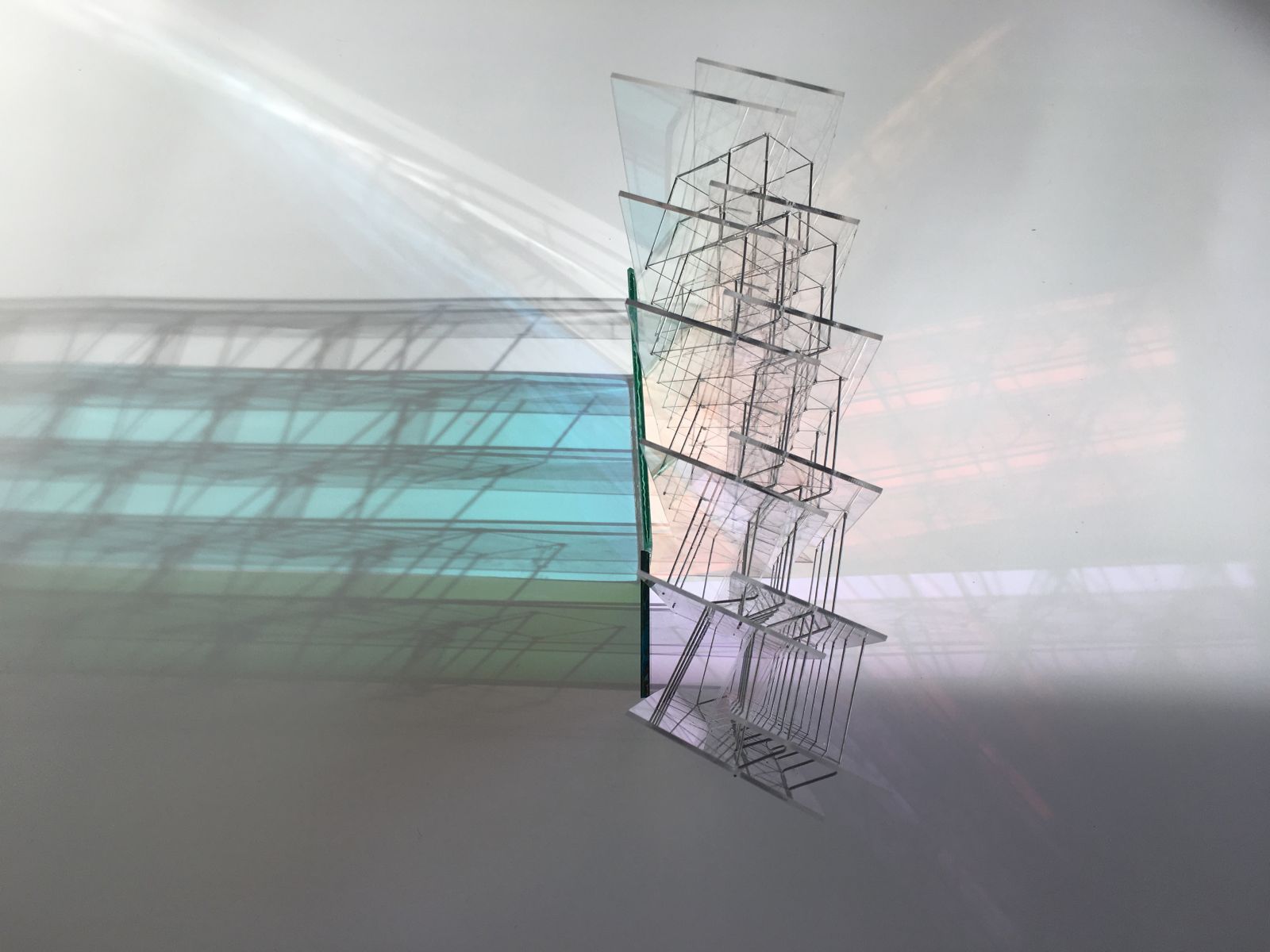
“Streaming New Educational Atmospheres,” by Associate Professor Jen Maigret and Professor Craig Borum, FAIA, explores how glass can transform educational settings. By inserting a dichroic glass “light-well room” between the corridor and classroom, they believe schools can improve light quality, energy performance, and learning outcomes.
“Glass blurs boundaries between the inside and outside, becoming the medium for light, view, and nuanced human interactions. There is an opportunity to see wellness through the lens of glass — identifying new opportunities while reframing existing conditions,” says Upali Nanda, associate professor of practice who is working with Adams.
The team notes that existing research doesn’t fully grasp the correlation between stress, wellness, and the work environment. By exploring the role that glass can play, they want to help bridge the knowledge gap: “The health of an individual contributes to the health of a workforce and its organization. This informs a need for an architecture of health and well-being for the 21st-century workplace.”
Reimagining the Industry-Academia Bridge
Guardian Industries began as Guardian Glass Co. 87 years ago, producing 100 laminated windshields a day in a plant on Detroit’s lower east side. Today, it produces thousands of tons of high-performance glass daily in 25 manufacturing facilities on five continents — relying on robots, advanced technologies, and scores of scientists and engineers to stay ahead of the global building industry.
As part of this focus on the future, Guardian Industries and Taubman College created a new research alliance exploring topics as varied as building envelope systems, the acoustical properties of curved glass, and the impact of the built environment on workplace wellness.
Both organizations sense something special in the relationship’s potential.
“If I am allowed a metaphor, it’s like we have been out on a few dates and decided to get more serious. It’s a partnership full of hope and excitement,” says Sheldon Davis, vice president for research and development at Guardian Glass, a Guardian Industries company. “From the Guardian side, we believe that Taubman will make us better. We seek better insights and understanding around architecture and the work of architects. We want to gain deeper knowledge so that we can play our role and make buildings better for everyone.”
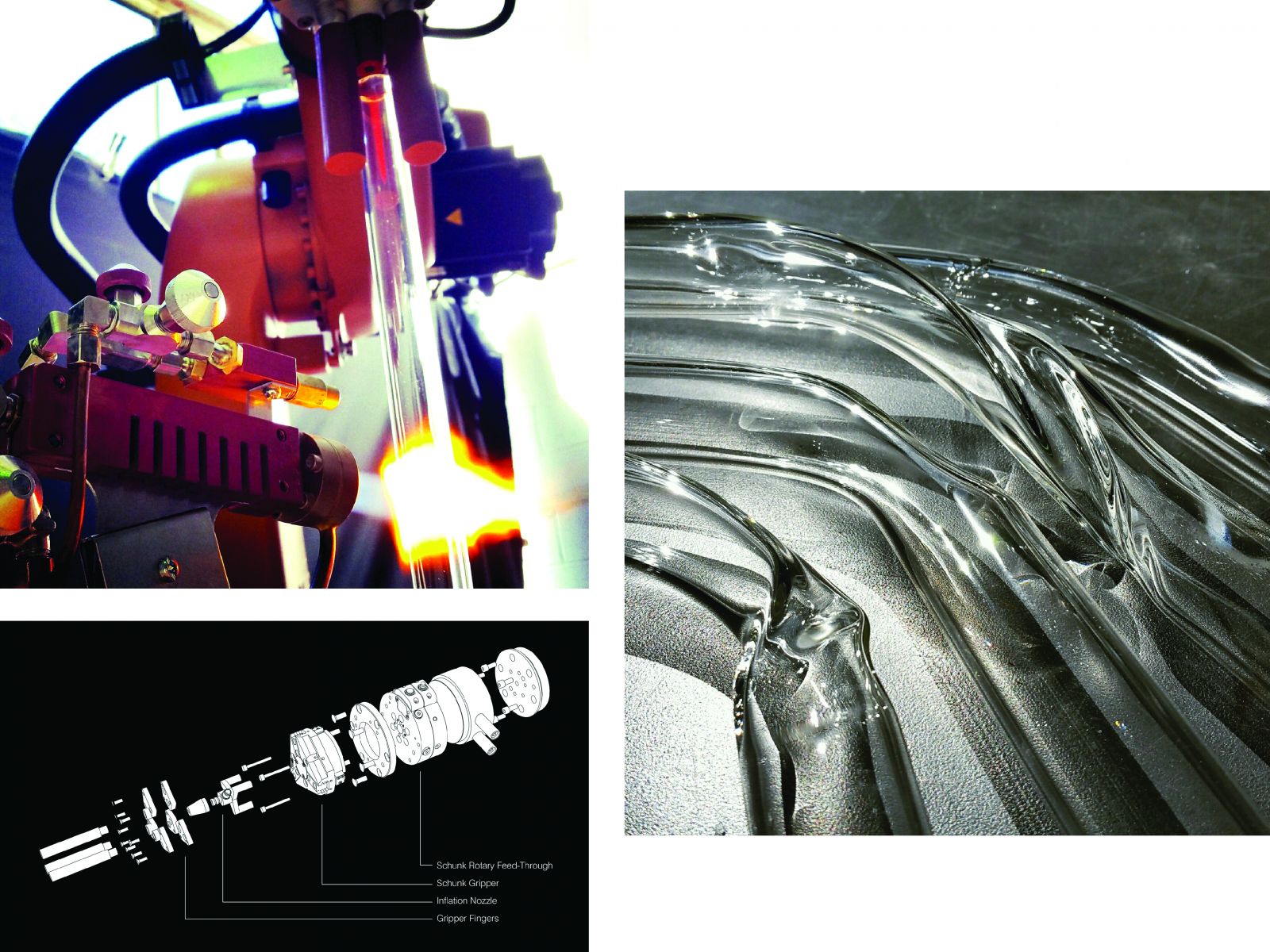
“Robotic Glass Blowing,” by Associate Professor Matias del Campo, Assistant Professor of Practice Sandra Manninger, and Associate Professor Wes McGee explores how the precision and predictability of robotic fabrication could enhance glassblowing.
For Geoffrey Thün, associate dean for research and creative practice, the Taubman-Guardian relationship holds the promise of a new kind of deliberative, collaborative alliance between academia and industry.
“We are reimagining how we engage companies and how we think about new ways of pursuing these kinds of research relationships together,” Thün says. “We want to co-create trajectories that produce mutual benefit, produce new knowledge, provide advanced training for our students, create an opportunity to engage our alumni network — which includes many leading practitioners around the globe — and translate new findings into the world, into the built environment.”
Adams and other Taubman College faculty who have received funding from Guardian say the company is leveraging their research to explore, inform, craft, and advance a long-term strategic vision, not for quick-turnaround product development. For example, since glass is central to Adams’s research project and Guardian’s bottom line, he was surprised when the company told him not only to consider commercial applications but to look for design opportunities beyond glass applications. It was an exciting directive for his first collaboration with an industry sponsor. “It has been overwhelmingly positive,” Adams says. “They’ve kept us sharp and are incredibly generous and supportive in helping us speculate beyond what we thought we could do.”
Guardian Glass focuses on two research priorities — creating products that people value and that create value for society and improving how those products are delivered. “Creating products is a broad, overarching statement, but it applies most to our research alliance with Taubman College,” Davis says. “First, we focus on understanding people’s needs. While this is a simple and oft-spoken corporate mantra, the building construction value chain is composed of many ‘people.’ The industry constructs buildings for occupants and owners through a multi-step supply chain. As a supplier, we consider all perspectives and needs in order to provide products that are valued.”
Davis adds that product innovation — and innovation in general — is a key capability for the business: “We know that businesses must continue to innovate in order to succeed. Employees throughout the company, including those beyond our R&D capability, take pride in our innovations. We push to find new ways to create value for society and to reduce the resources used to do so.”
A Cross-Campus, Interdisciplinary Model
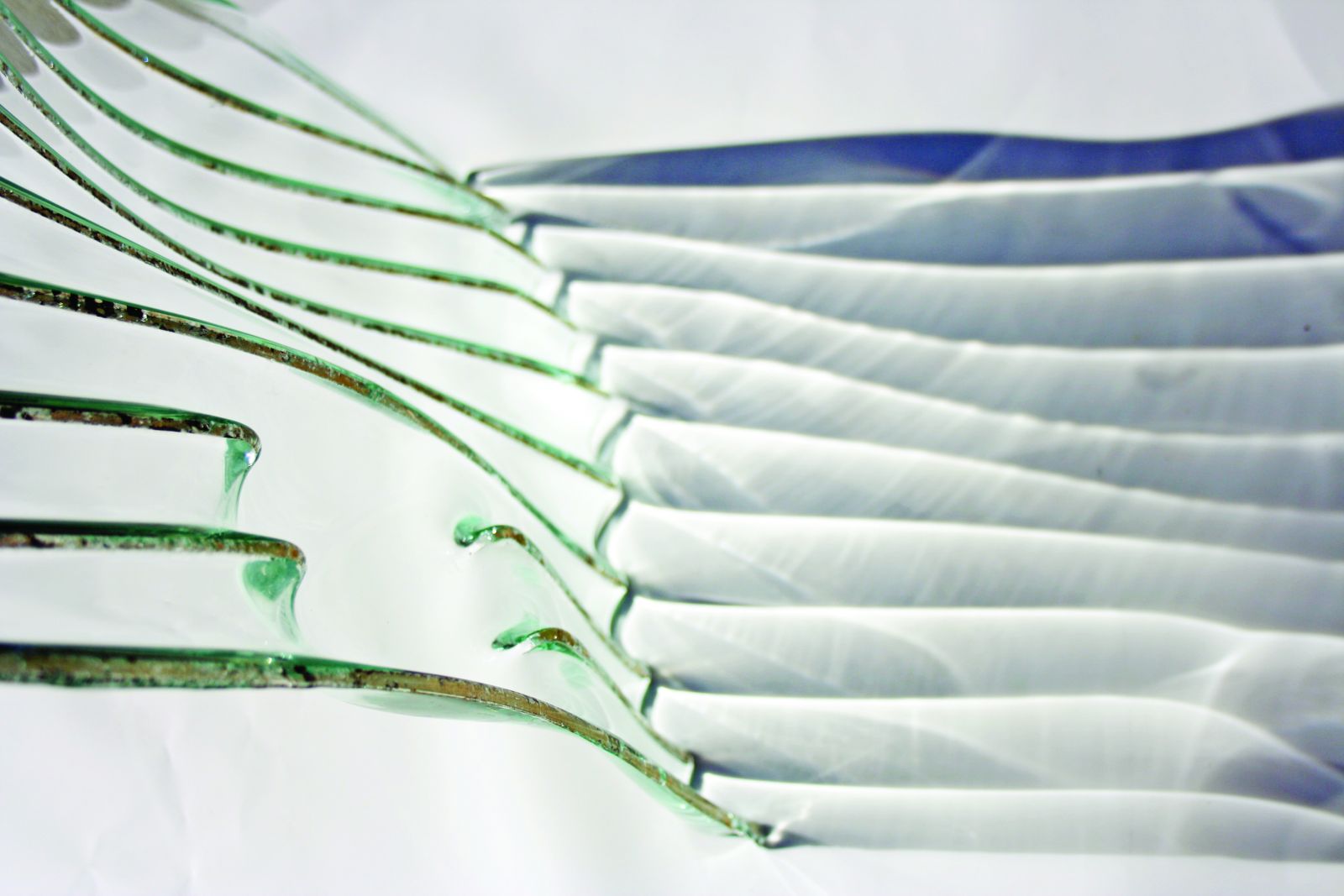
Detail from Maigret and Borum’s “Streaming New Educational Atmospheres.”
Research pursued through this venture is reaching beyond Taubman College. Guardian Industries also actively collaborates with U-M’s College of Engineering and Stamps School of Art and Design. “Guardian is a company that relies on complicated science and engineering to deliver discrete products into a complicated value chain,” Davis explains. “These products build homes and offices that make up our lives, towns, and cities. Guardian lives at the intersection of architecture, design, and engineering. With regard to our involvement with the University of Michigan, Taubman College completes that picture.”
Thün notes that the faculty research team for Adams’s workplace wellness project includes experts in information science, industrial design, architectural history and theory, and health care architecture. Another Guardian-funded project, “Design Ecologies of Glass,” is led by architecture faculty Kathy Velikov and Matias del Campo but includes team members with expertise in industrial ecology, sustainability, lifecycle analysis, advanced robotic construction, and building system and energy analysis.
“At Michigan, we have more than a hundred top 10 graduate programs,” Thün says. “We’re not just engineering or medicine, we’re everything. There is incredible strength in our interdisciplinary research capacity. When we’re developing a relationship with an industry partner, we have this capacity to explore what the innovative new frontiers are for their material supply streams and then connect new thinking about new material systems with a significant group of practitioners.
“When I think about the multiplicity of benefits to a corporate partner working with Taubman, it’s more than just the innovative research our exceptional faculty undertakes,” he says. “It’s also these robust networks of additional expertise — drawn from all corners of the University of Michigan campus — that we can bring to complex problems.”
The Guardian-Taubman Research Alliance
The funding for the new studies led by Adams and Velikov and del Campo are the latest collaborations in a burgeoning industry-university relationship that began in 2012. At that time, Guardian sponsored a paper by Velikov titled “The Benefits of Glass: A Literature Review on the Qualitative Benefits of Glass on Building Occupants,” in which she outlined the state of the art in research examining the qualitative environmental, psychological, and health benefits of glazing systems.
In 2016, the Innovation in Glass Design Research program provided seed funding for three Taubman College projects focused on new architectural applications of glass as a material system, including acoustic glass, robotic glass forming, and dichroic glass daylighting systems. “Activating Curvature: Modulating Transparency and Sound Performance across Curving Glass” was led by Catie Newell and Wes McGee (along with collaborator Zackery Belanger of Arcgeometer); “Streaming: New Educational Atmospheres” was led by Jen Maigret and Craig Borum; and “Robotic Glass Blowing” was led by del Campo, McGee, and Sandra Manninger.
Newell and McGee’s “Activating Curvature” is Taubman College’s longest-running project funded by Guardian. The pair began exploring the production, performance, and aesthetics of curved glass years ago when they realized digital fabrication methods were transforming most building materials — but not glass. “We simultaneously recognized that glass was falling behind,” Newell says.
Guardian has shared its technical expertise and participated in problem-solving with the research team. “Having their input has really helped us think about how to deploy this on an architectural scale,” McGee says. “We are extremely grateful for the support,” adds Newell. “It feels like a partnership.”
The latest initiative, called the Guardian-Taubman Research Alliance, is an effort to “open up new avenues for the glazing sector to expand its markets and applications, while simultaneously revealing new possibilities for innovation in the design of the built environment,” Guardian said in the award announcement. Through the alliance, Guardian is funding two projects. The first is Adams’s study, “Biometric, Communicative, and Environmental Interfaces: Expanding the Functional Integration of Glass in Promoting Health and Wellness in the Workplace,” with Associate Professors Joy Knoblauch, Upali Nanda, and John Marshall, as well as faculty from U-M’s School of Information. The second is “Design Ecologies of Glass,” led by Velikov and del Campo.
“The process of developing this program was very much in the spirit of co-authorship,” Thün says. “The goal was to align questions and challenges most urgent for Guardian with the interests and capabilities of our faculty.”
In “Design Ecologies of Glass,” Velikov and del Campo are exploring how the design and construction of buildings intertwine with production systems, manufacturing technologies, regulatory and economic frameworks, and cultural and societal contexts.
“This project will position glass building envelopes within their contemporary and near-future ecologies of manufacturing, production, and performance,” Velikov and del Campo said in the project proposal. Specifically, the team will explore how increased thermal resistance for glazing can lead to new building envelope systems made of glass and new glass-skinned building typologies.
“The goals are to understand current paradigms for glass in buildings and to explore where these paradigms can be redefined for future envelope systems and building typologies based in emerging envelope technologies, uses, fabrication, and construction techniques, in order to identify new design and market opportunities for high-performance glazing systems,” the team said in the proposal. This approach includes creating opportunities to bring thought leaders into dialogue with the Guardian and Taubman teams through engagement as external expert advisers. In September, the team brought envelope industry icon Marc Simmons, a founding principal at Front Inc., to campus for a project meeting and public lecture on the frontiers of envelope design.
The researchers hope to sketch a big-picture beyond and not focus on specific buildings, materials, or industries. “As architects, you can start to have more agency and understanding of the broader built environment,” Velikov says, “and how we can transform buildings for the future.”
That aligns nicely with Guardian’s goal for its alliance with Taubman researchers. “These projects seek to explore key issues in architecture,” Davis says. “In one, we want to challenge building design and technology in order to deliver better buildings for society. In the other, the team is pushing for deeper insights into how buildings can be designed and built for better health and wellness outcomes. We want to have meaningful impacts on both these issues.”
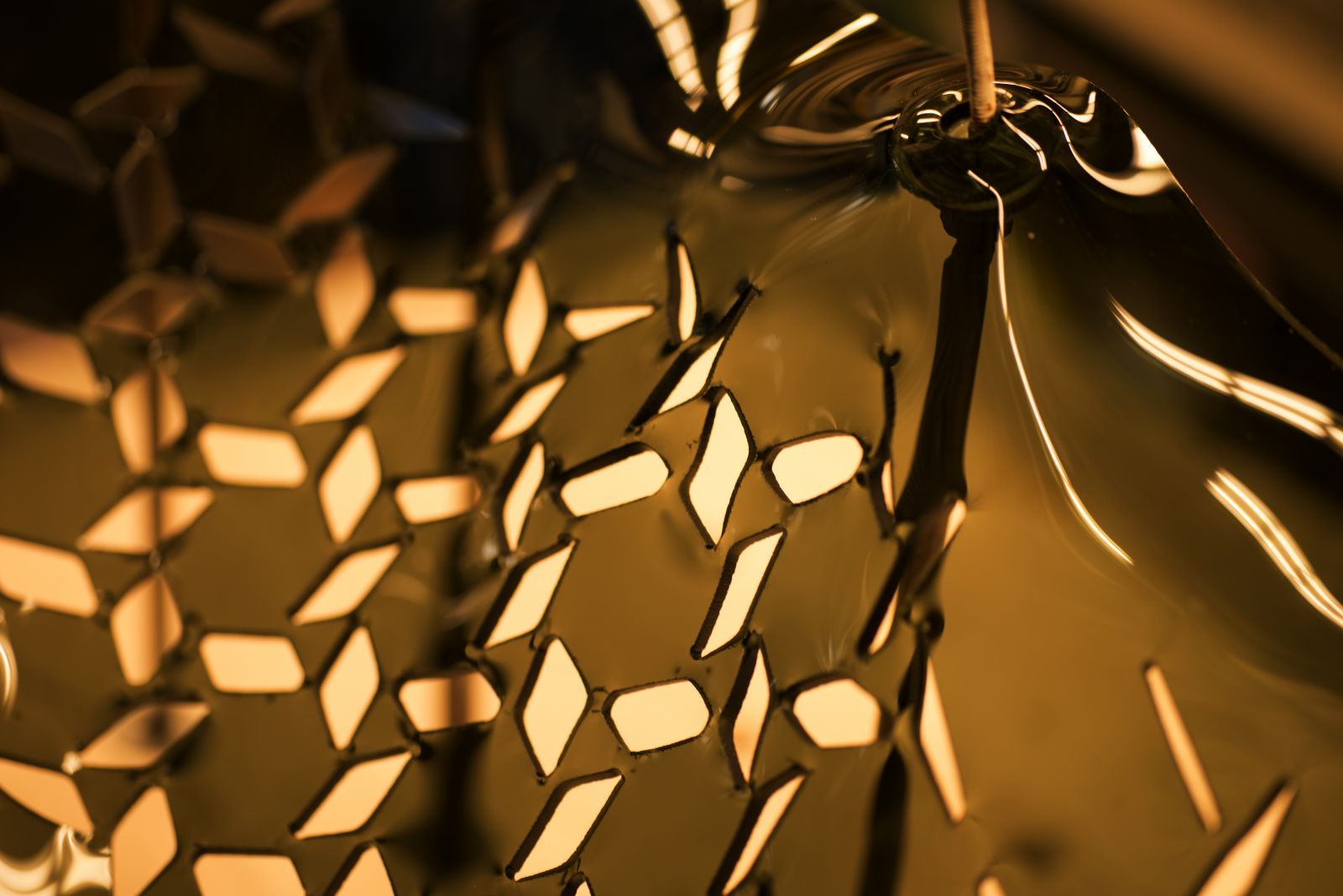
Detail of curvatures induced by slumping auxetic patterns in “Slumped Glass: Auxetics and Acoustics” by Associate Professors Wes McGee and Catie Newell and Zackery Belanger (Arcgeometer LC).

